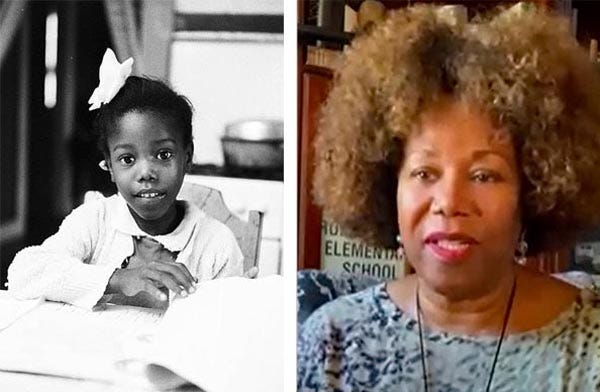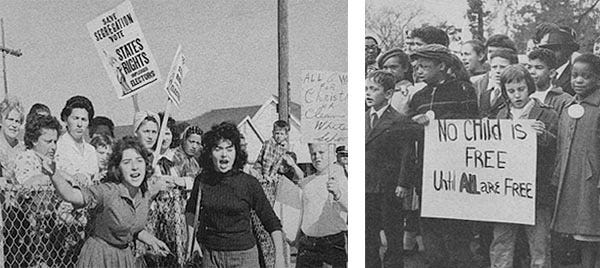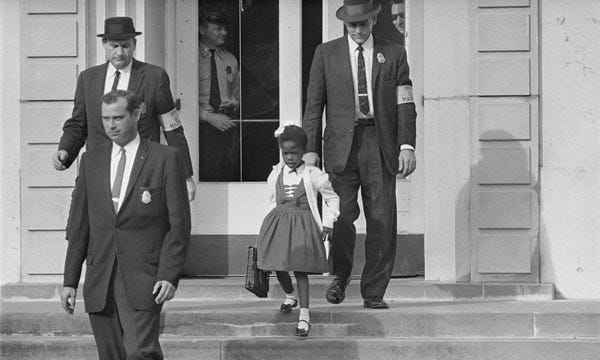Carry a Protest Sign for Ruby Bridges
Stand up for the children, because they would do it for you.
If you walk through the public library door with an open mind, there’s a good chance you’ll find a book that answers the question you didn’t know you had. This week for me it was this little book.
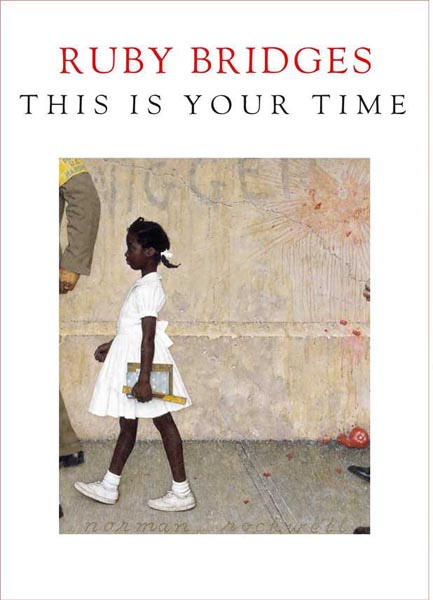
As I turn the pages, I feel that this is my time - to relate to this little girl.
Many of us are protesting, writing letters, and helping those who suffer from the current attack on human justice in our country. But such a serious adult concern is not what Ruby Bridges felt as a child. She says in her book,
In 1960, my life changed forever. Although I was not aware of it, our nation was changing, too. What I remember about that time, through my six-year-old eyes, is that there was extreme unrest, much like we see today.
I was chosen to be the first black child to go to an all-white school, William Frantz Elementary, in my hometown, New Orleans.
She continues,
When I arrived at this all-white school that first day, [November 14, 1960], all the white parents rushed in and pulled out their kids. They didn’t want their children going to school with me. But why? I didn’t understand. They had never met or even seen me before now, so how could they know what kind of person I was?
But none of that mattered. I don’t think they even saw a child. All they saw was the color of my skin. I was black, and that meant I didn’t matter.
Ruby’s parents were divided about placing her in that position, and in the end it was hard on her family and even on herself. So there was a cost. But what a purchase! We can be grateful today for their courage and for the courage of those who chose to support them.
The virulent demonstrations that Ruby and her mother walked through with police protection were unkind and irrational. The contrast between them and the calm resolution of the children shown below, is startling.
As an adult, Ruby Bridges recognizes moral value in the example of innocent children.
At the same time, she admonishes the adults who, in their racial and moral struggle, place a burden on the children caught in the middle. We’re experiencing this again today in America, with the ideological battle over our public schools.
Ruby has said that on that day as a six-year-old, she thought all the excitement outside her new school might be a Mardi Gras parade. It seems natural for an adult (even myself) to attribute mature courage to a child. One of the marshals who guarded Ruby and her mother on November 14, later said,
She showed a lot of courage. She never cried. She didn't whimper. She just marched along like a little soldier, and we're all very, very proud of her.
Perhaps Ruby’s greatest support that school year came from her teacher, Mrs. Henry. The two of them alone in the classroom, day by day, laid the foundation for all the integrated years to come. The example was set.
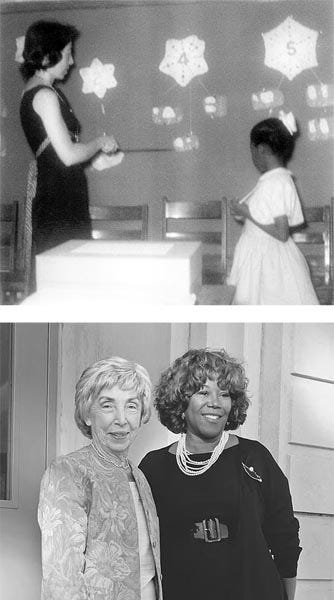
The powerful little book, This Is Your Time, “this letter of peace”, is dedicated by the author
to Congressman John Lewis, icon of the civil rights movement, with admiration. He was known as the conscience of Congress, truly an example of ‘a soul generated by love’. …
We have so much work to do, Young Peacemakers of the world.
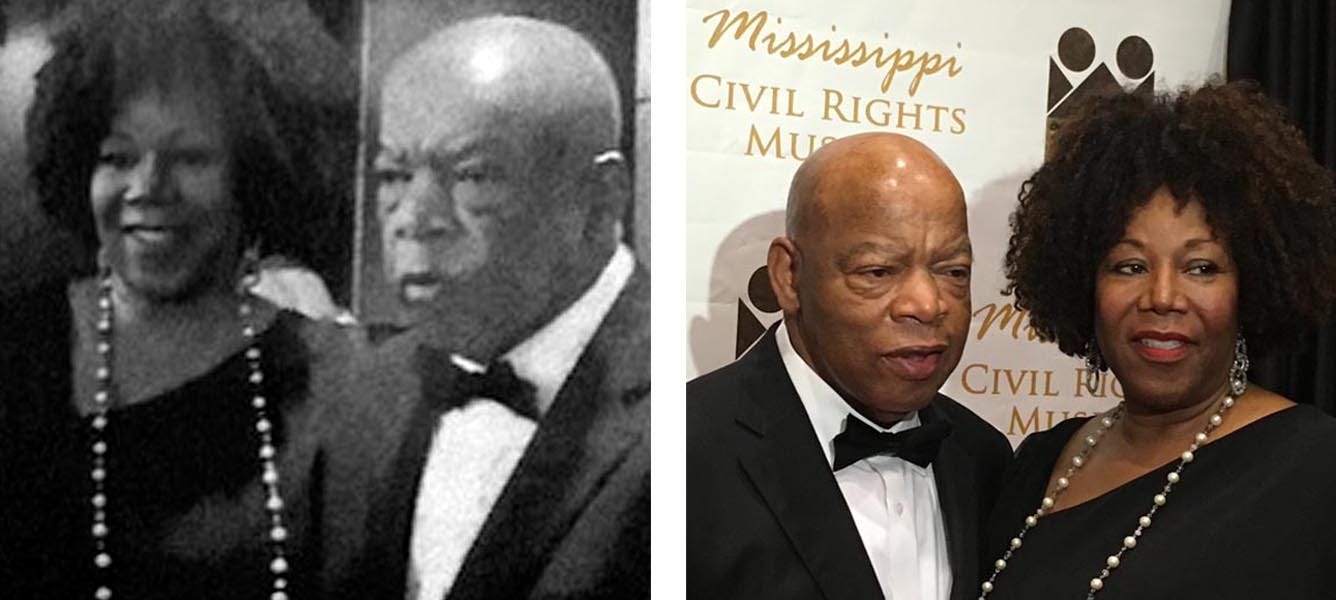
Heather Cox Richardson’s tribute to John Lewis in her July 17 Letter from an American ends with his words,
‘My philosophy is very simple,’ Representative Lewis once told an audience. ‘When you see something that is not right, not fair, not just, say something! Do something! Get in trouble, good trouble, necessary trouble.’
Lewis, like Ruby Bridges, chose to use his damaging life experience to inspire others to work for justice for every American.
Ruby has filled her life with public speaking. She shares her story with children everywhere, encouraging their instinct for good and giving them tools to be effective.
She tells the adults to fight for racial justice, while hoping that children won’t be caught in the middle.
Don’t be afraid. This is your time in history. Keep your eyes on the prize. And at all costs, stay united.


